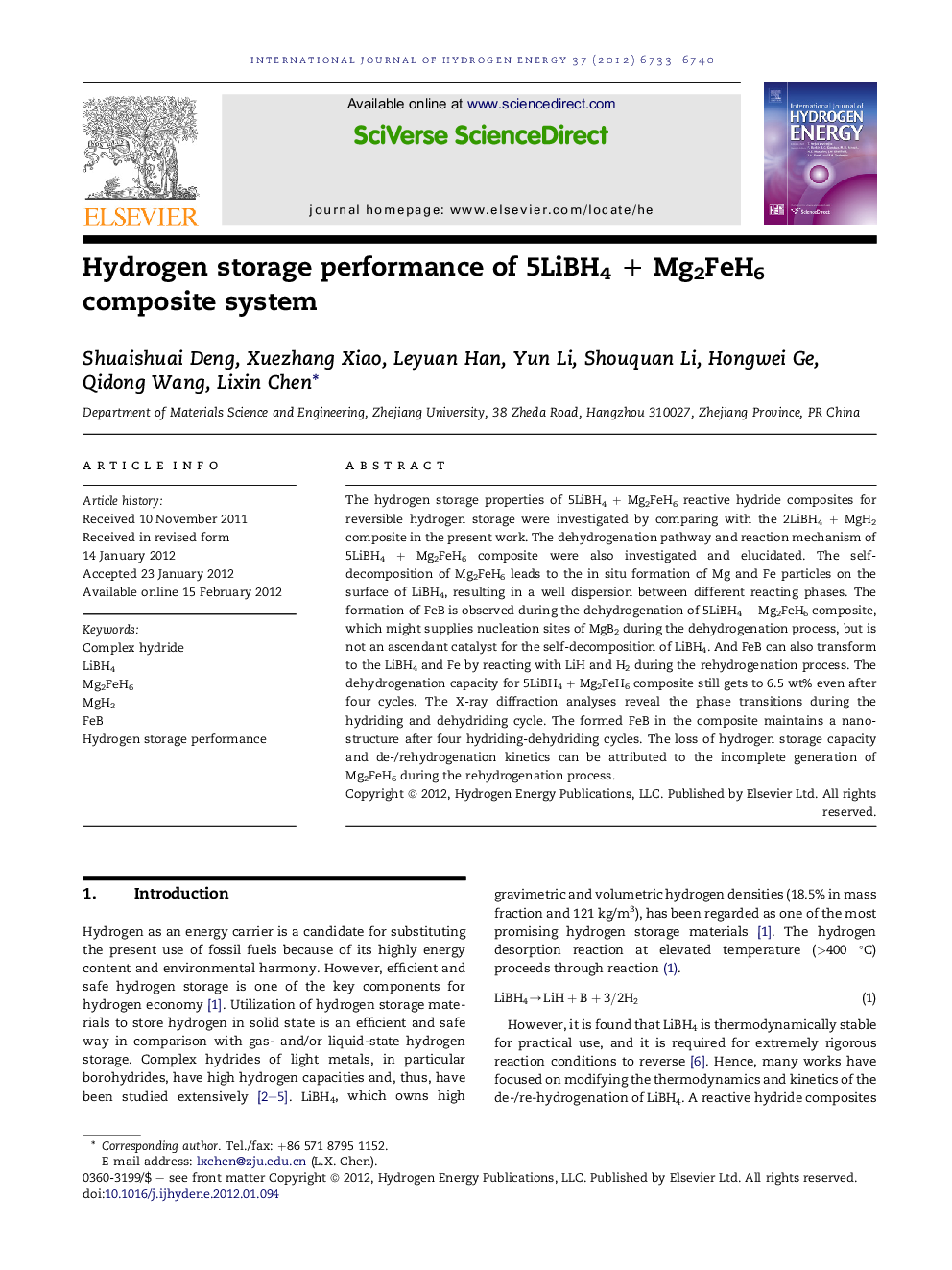| Article ID | Journal | Published Year | Pages | File Type |
|---|---|---|---|---|
| 1276614 | International Journal of Hydrogen Energy | 2012 | 8 Pages |
The hydrogen storage properties of 5LiBH4 + Mg2FeH6 reactive hydride composites for reversible hydrogen storage were investigated by comparing with the 2LiBH4 + MgH2 composite in the present work. The dehydrogenation pathway and reaction mechanism of 5LiBH4 + Mg2FeH6 composite were also investigated and elucidated. The self-decomposition of Mg2FeH6 leads to the in situ formation of Mg and Fe particles on the surface of LiBH4, resulting in a well dispersion between different reacting phases. The formation of FeB is observed during the dehydrogenation of 5LiBH4 + Mg2FeH6 composite, which might supplies nucleation sites of MgB2 during the dehydrogenation process, but is not an ascendant catalyst for the self-decomposition of LiBH4. And FeB can also transform to the LiBH4 and Fe by reacting with LiH and H2 during the rehydrogenation process. The dehydrogenation capacity for 5LiBH4 + Mg2FeH6 composite still gets to 6.5 wt% even after four cycles. The X-ray diffraction analyses reveal the phase transitions during the hydriding and dehydriding cycle. The formed FeB in the composite maintains a nanostructure after four hydriding-dehydriding cycles. The loss of hydrogen storage capacity and de-/rehydrogenation kinetics can be attributed to the incomplete generation of Mg2FeH6 during the rehydrogenation process.
► MgH2 and Fe is added to LiBH4 by the addition of Mg2FeH6 as a precursor. ► A total hydrogen release capacity of 8 wt% is obtained for the composite. ► The composite still gets to 6.5 wt% even after the four cycles. ► The formation of FeB might supplies nucleation sites of MgB2. ► The loss of cycle performance is attributed to the incomplete generation of Mg2FeH6.
